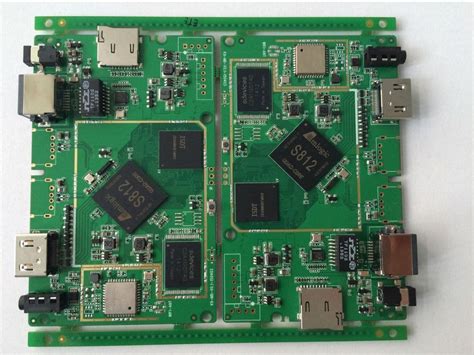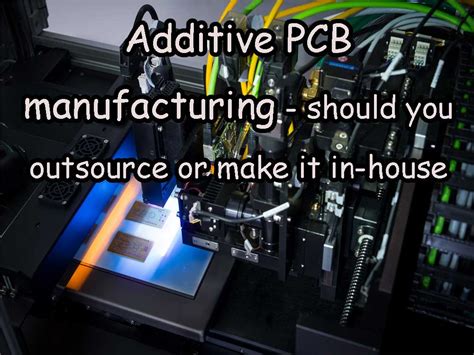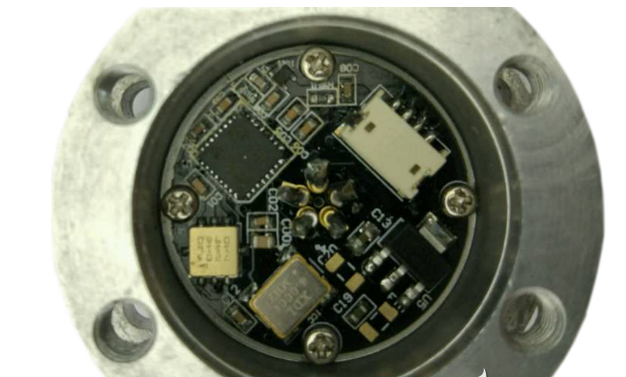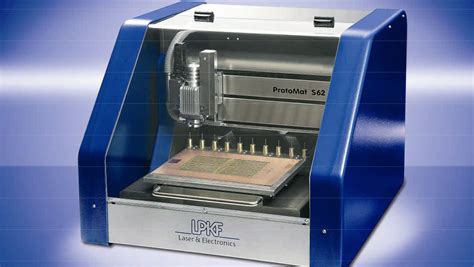Unlocking Innovation: The Future of Board PCBA Technology
Key Takeaways
As the realm of board PCBA technology continues to advance, several key takeaways emerge that underscore its significance in driving innovation across industries. First and foremost, the evolution of pcb assembly processes is becoming increasingly sophisticated, integrating smart technologies that enhance both efficiency and precision. The adoption of automated solutions in pcba manufacturing not only streamlines production but also reduces the potential for human error, resulting in higher-quality outputs. Furthermore, sustainability has become a pivotal focus for manufacturers; efforts to create more environmentally friendly pcba designs are transforming traditional practices and addressing growing consumer demand for eco-conscious products. Additionally, the integration of machine learning and AI capabilities is set to redefine how manufacturers approach design and quality control, enabling predictive maintenance and smarter production lines. These advancements collectively illustrate a thriving environment for innovation within the board PCBA sector, ultimately shaping a more connected and efficient future for electronic manufacturing across various applications.
Introduction to Board PCBA Technology: A Journey Through Innovation
The world of Board PCBA technology represents a fascinating convergence of creativity and engineering, driving unprecedented advancements in the realm of electronic manufacturing. The journey begins with the intricate process of pcb assembly, where electronic components are mounted onto printed circuit boards (PCBs) to create a functional assembly. This foundational step sets the stage for innovations that are consistently raising the bar on efficiency, reliability, and performance. Today, PCBA processes leverage cutting-edge techniques such as surface mount technology (SMT) and through-hole technology (THT), enabling manufacturers to produce more compact devices with enhanced performance capabilities.
As industries continue to demand more sophisticated solutions, the evolution of Board PCBA has incorporated automation and advanced robotics, leading to significant improvements in production speed and accuracy. This transformative approach not only reduces human error but also meets the growing need for mass customization in electronics manufacturing. Moreover, as more businesses prioritize sustainability, the design principles underlying pcb assembly are shifting towards environmentally friendly practices. The integration of recyclable materials and energy-efficient processes is becoming commonplace in production lines.
A valuable strategy for manufacturers is to adopt a holistic view of innovation; approaching it not merely from a technological standpoint but considering market demands, environmental impacts, and end-user experiences simultaneously.
Indeed, this approach fosters a culture where innovation thrives in response to tangible needs within various sectors including telecommunications, healthcare, and consumer electronics. As we move forward into the future of Board PCBA technology, it is clear that continual exploration and adaptation will be pivotal in shaping not only products but entire industries.
Key Advancements in Board PCBA: What Sets Today Apart
The realm of Board PCBA technology has witnessed remarkable transformations in recent years, with several key advancements setting today’s processes apart from those of the past. One notable innovation is the integration of advanced materials that enhance the performance and durability of pcb assembly products. These materials often include high-frequency laminates and flexible substrates that allow for greater design flexibility and improved thermal management. Additionally, the miniaturization trend has enabled manufacturers to create smaller, more efficient pcba solutions without compromising functionality. Another significant advancement is the implementation of sophisticated automated inspection systems, which utilize machine vision technology to identify defects in real-time. This has drastically improved quality control and reduced production costs by minimizing human error. Furthermore, the adoption of modular assembly techniques permits greater scalability in production, allowing companies to respond swiftly to market demands. Overall, these advancements not only enhance the efficiency of manufacturing processes but also significantly contribute to the evolution of electronic devices across various sectors, making today’s Board PCBA technologies more reliable and versatile than ever before.
Emerging Trends in Board PCBA: Shaping the Future of Electronics
The realm of board PCBA technology is witnessing a dynamic transformation, led by several emerging trends that are poised to reshape the future of electronics. One significant trend is the increasing adoption of miniaturization, which allows for more compact designs without sacrificing performance. This shift is not only benefiting consumer electronics, where space efficiency is crucial, but also enhancing pcb assembly capabilities across various sectors including automotive and healthcare. As devices grow smaller, manufacturers are turning to advanced materials and precise manufacturing techniques to ensure reliability and efficiency.
Moreover, the shift towards smart electronics, integrated with the Internet of Things (IoT), has created a heightened demand for PCBA solutions that can support connectivity while maintaining functionality. Smart devices require advanced pcba designs that can accommodate complex circuitry and high-density interconnections. This evolution is accompanied by a surge in flexible PCBs that enable innovative product designs, leading to enhanced user experiences.
The focus on sustainability in board manufacturing processes reflects another crucial trend, as companies strive to reduce their environmental footprint. By utilizing eco-friendly materials and optimizing manufacturing processes, they are not only meeting regulatory requirements but also appealing to increasingly conscious consumers.
In summary, as we continue to explore the landscape of board PCBA, these emerging trends underscore a pivotal shift in how electronic products are developed and produced. The industry’s future will be characterized by smarter, more compact innovations and sustainable practices that drive growth across multiple sectors.
| Trend | Description | Impact on Industry |
|---|---|---|
| Miniaturization | Compact designs enhancing performance | Improved space efficiency in products |
| Smart Electronics | Integration with IoT for enhanced connectivity | Development of interconnected smart devices |
| Sustainability | Eco-friendly materials and manufacturing processes | Reduced environmental impact |
In conclusion, understanding these trends will be essential for manufacturers looking to stay competitive in a rapidly evolving market focused on pcb assembly technology. The future holds endless possibilities as innovation continues to thrive within the board PCBA landscape.
The Role of Automation and AI in Board PCBA Manufacturing
The integration of automation and artificial intelligence (AI) in the realm of Board PCBA (printed circuit board assembly) manufacturing is revolutionizing the industry. These technologies lead to significant improvements in production efficiency, reducing the time needed for pcb assembly while maintaining high standards of quality. Automation minimizes human error, ensuring that soldering and component placement are executed with precision unmatched by manual processes. Meanwhile, AI-driven solutions enhance data analysis, allowing manufacturers to predict failures and optimize maintenance schedules effectively. This proactive approach not only cuts down on downtime but also reduces costs associated with unexpected repairs or defects in pcba production. Furthermore, AI algorithms facilitate real-time monitoring of the manufacturing process, enabling quick adjustments that enhance overall productivity. As technology continues to advance, the reliance on automation and AI will become even more critical, positioning board pcba manufacturers at the forefront of innovation in electronic fabrication.
Impact of Sustainability on Board PCBA Design and Production
The increasing emphasis on sustainability is reshaping the landscape of pcb assembly and PCBA processes. As industries recognize the importance of reducing their environmental footprint, the design and production of board PCBA are witnessing substantial changes. The integration of eco-friendly materials and processes is becoming a priority, as many manufacturers seek to eliminate hazardous substances from their PCBA products. This shift not only aids compliance with global regulations but also enhances brand reputation among environmentally conscious consumers. Furthermore, advancements in recycling technologies allow for more efficient recovery and reuse of components, thereby reducing waste. In addition to material considerations, companies are adopting more sustainable manufacturing practices such as lean production techniques to minimize resource consumption. By leveraging these innovations, the board PCBA sector is not only contributing to a more sustainable future but also gaining a competitive advantage in a market that increasingly values responsibility alongside innovation. As these trends continue to evolve, they are likely to set new standards for how pcb assembly is approached across various industries, merging operational efficiency with environmental stewardship.
Case Studies: Transformative Applications of Board PCBA across Industries
The integration of Board PCBA in various industries has showcased remarkable transformations, demonstrating its crucial role in modern manufacturing. For instance, in the automotive sector, the advent of advanced pcb assembly techniques has led to improved safety features and enhanced vehicle performance. As cars become more reliant on electronics for navigation, entertainment, and autonomous functions, the demand for PCBA technology has surged, pushing engineers to innovate beyond traditional methods. In healthcare, the use of Board PCBA has revolutionized medical devices such as wearables and diagnostic equipment, enabling more precise monitoring and faster patient responses. This has dramatically increased the efficacy of treatment protocols and patient care standards. Furthermore, the telecommunications industry relies heavily on pcb assembly for robust network infrastructure; the rapid development of 5G technology is a prime example where PCBA solutions are critical for meeting bandwidth demands while ensuring device compactness and energy efficiency. These case studies illustrate not just the versatility but also the profound impact of Board PCBA on various sectors, reinforcing its role as a cornerstone of technological innovation in a rapidly evolving marketplace.
Future Challenges and Opportunities in the Board PCBA Landscape
As the board PCBA technology continues to evolve, it opens up a myriad of challenges and opportunities for the electronics manufacturing industry. One of the primary challenges lies in keeping pace with the rapid advancements in technology while ensuring that pcb assembly processes remain efficient and cost-effective. Companies must adapt to increasing demand for high-quality products that require sophisticated designs and advanced materials. Additionally, as the complexity of PCBA increases with the integration of smart components, manufacturers face heightened pressure to improve yield rates and reduce defect levels. On the flip side, these challenges present a wealth of opportunities. The rise of automation and artificial intelligence promises to enhance production capabilities, allowing for more precise pcb assembly processes that can lead to reduced costs and improved turnaround times. Furthermore, as industries push towards greater sustainability, there is an opportunity for companies to innovate in their design and production methodologies. This includes employing eco-friendly materials and energy-efficient practices that align with global environmental goals. Ultimately, while navigating these challenges requires strategic planning and investment, it also positions businesses to leverage transformative advancements in board PCBA technology for future growth.
Conclusion
The Board PCBA landscape is rapidly evolving, driven by not only technological advancement but also the increasing necessity for efficiency and sustainability in manufacturing processes. As industries continue to embrace automation and artificial intelligence, the capabilities of pcb assembly will become even more sophisticated, leading to improved production speed and accuracy. Furthermore, innovations in materials and design techniques are paving the way for more reliable and environmentally friendly PCBA solutions, allowing manufacturers to meet modern consumer expectations while adhering to stricter regulations. The growing emphasis on sustainability is compelling companies to reevaluate their production practices, which enhances both the durability of their products and minimizes waste. These transformative trends position Board PCBA technology as a critical player in shaping the future of electronics across multiple sectors. As companies grapple with future challenges—such as supply chain disruptions and market demands—those that prioritize innovation in pcb assembly are likely to thrive in this competitive landscape. In conclusion, the potential for PCBA technologies is immense, promising a future where electronic devices become increasingly integrated into everyday life while maintaining a commitment to excellence in production standards.
FAQs
What is Board PCBA technology?
Board PCBA, or Printed Circuit Board Assembly, refers to the process of attaching electronic components to a printed circuit board, creating a functional electronic unit. This technology is integral to the manufacturing of various electronic devices across industries.
How does PCB assembly affect product reliability?
The quality of PCB assembly plays a significant role in the reliability and performance of electronic products. Advanced pcba techniques ensure precise component placement and soldering, minimizing defects and enhancing durability.
What are the key advancements in Board PCBA today?
Recent advancements include improved automation in production processes, enhanced inspection technologies, and innovative materials for soldering. These improvements lead to higher efficiency and lower production costs for manufacturers.
Why is sustainability important in Board PCBA design?
Sustainability is becoming increasingly significant as manufacturers face pressure to reduce waste and environmental impact. Techniques such as lead-free soldering and energy-efficient processes not only comply with regulations but also appeal to environmentally conscious consumers.
How does automation influence Board PCBA manufacturing?
Automation dramatically enhances production speed and accuracy while reducing labor costs. Automated systems in pcba contribute to consistent quality, making the assembly process more efficient.
Unlock Your Potential with Board PCBA Technology
For those interested in learning more about how pcb assembly can transform their products, please click here.







